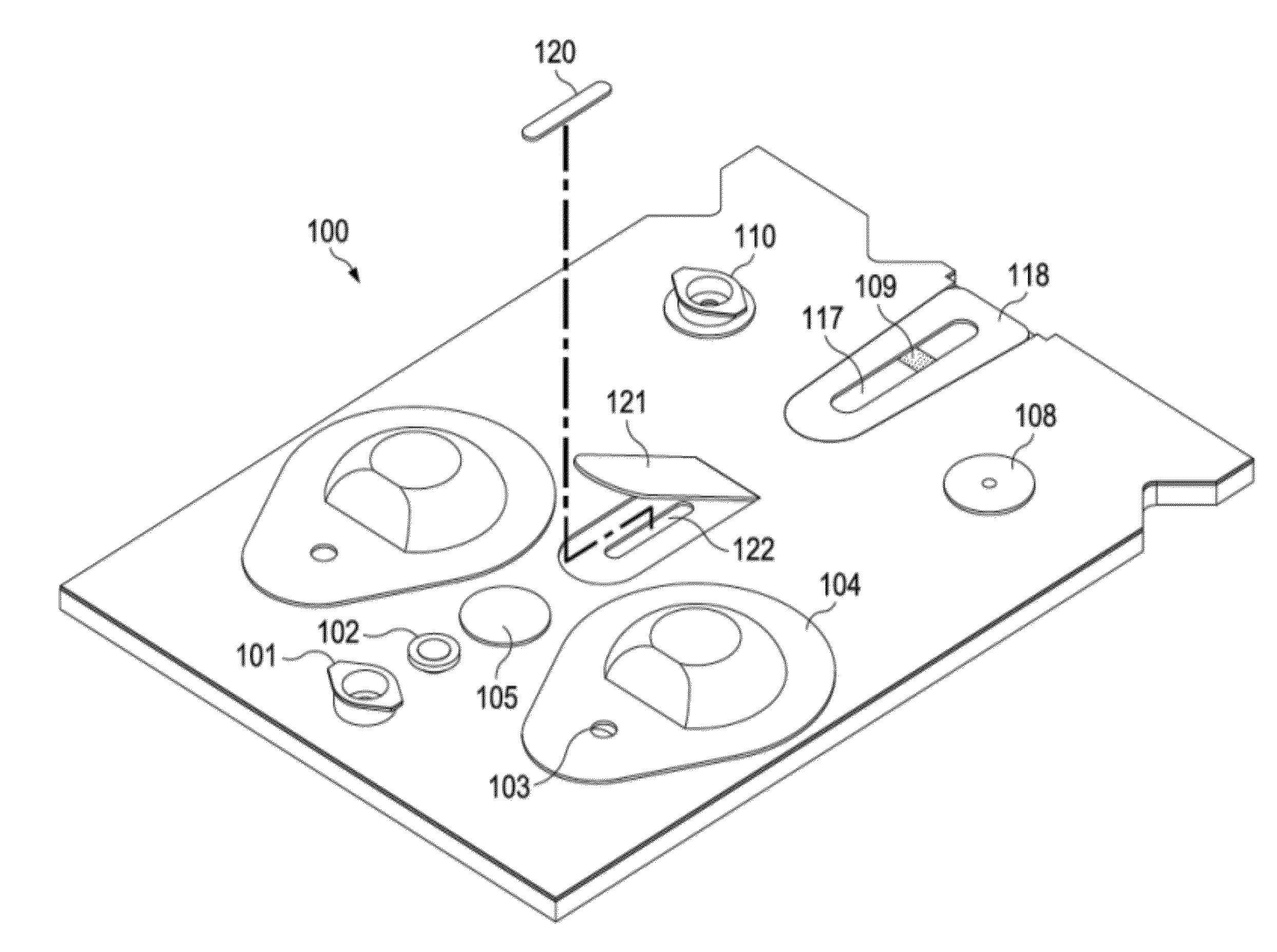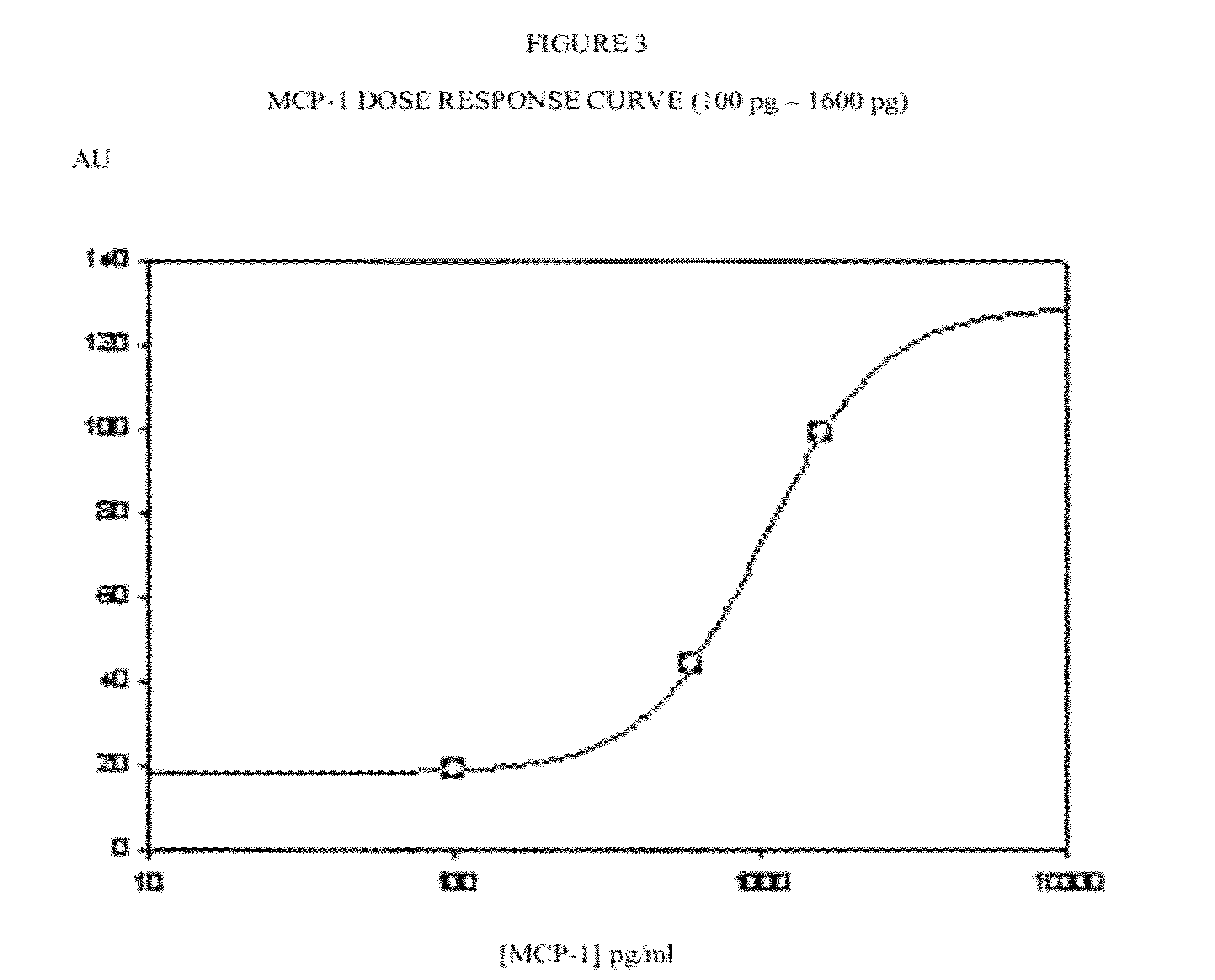Brain injury biomarker panel
- Summary
- Abstract
- Description
- Claims
- Application Information
AI Technical Summary
Benefits of technology
Problems solved by technology
Method used
Image
Examples
Embodiment Construction
and to illustrate the general principles of the invention. It should not be taken in a limiting sense. The section titles and overall organization of this section are adopted for the convenience of description and are not intended to limit the present invention.
DESCRIPTION OF THE DRAWINGS
[0060]FIG. 1 Bead image analysis methods: Line profile (LP), circular area of interest (cAOI), integrated density (ID), circular profile (CP) and fixed AOI, for the generation of dose response curves for a bead-based assay.
[0061]FIG. 2. Low end dose response titration curve for MCP-1. X axis is MCP-1 concentration in pg / mL, Y axis is Signal Intensity in absorbance units (AU).
[0062]FIG. 3. Dose response titration curve for MCP-1. Axes as in FIG. 2.
[0063]FIG. 4A-B shows a top plan view 4A of an exemplary cartridge, and a perspective view 4B showing details of a preferred access hatch construction.
DESCRIPTION OF THE INVENTION
[0064]FIG. 1 Bead image analysis methods: Line profile (LP), circular area of ...
PUM
 Login to View More
Login to View More Abstract
Description
Claims
Application Information
 Login to View More
Login to View More - R&D
- Intellectual Property
- Life Sciences
- Materials
- Tech Scout
- Unparalleled Data Quality
- Higher Quality Content
- 60% Fewer Hallucinations
Browse by: Latest US Patents, China's latest patents, Technical Efficacy Thesaurus, Application Domain, Technology Topic, Popular Technical Reports.
© 2025 PatSnap. All rights reserved.Legal|Privacy policy|Modern Slavery Act Transparency Statement|Sitemap|About US| Contact US: help@patsnap.com



